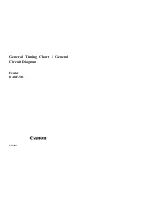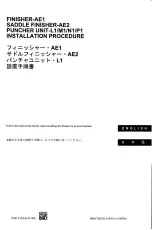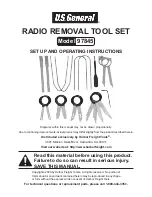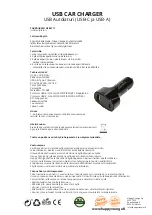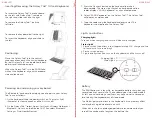
2.5 Operating in controlled partial state of
charge
The cycle life during daily cyclical application
can be increased when working in partial state of
charge if the installation and operating instruc-
tions, a maximum depth of discharge 80% C
10
and following special operating conditions are
fulfilled:
Carrying-out of full re-charge plus equalizing
charge at 2.4 Vpc for at least 12 h (better 24 h)
and a current of at least 20 A /100 Ah C
10
(max.
35 A/100 Ah C
10
)
– at least weekly with daily recharging up to
90% C
10
– at least every 14 days with daily recharging
up to 95% C
10
2.6 Equalizing charge
Because it is possible to exceed the permitted
load voltages, appropriate measures must be
taken, e.g. switch off the load. Equalizing charg-
es are required after deep discharges and/or in-
adequate charges, e.g. as described in item 2.4.
They can be carried out as follows: Up to 48
hours at max. 2.40 Vpc and with unlimited cur-
rent. The cell/block temperature must never ex-
ceed 45 °C. If it does, stop charging or revert to
float charge to allow the temperature to drop.
For system voltages
≥
48 V every one to three
months:
Method 1: IUI
I-phase = up to voltage acc. to fig.1 at 20 °C
U-phase = until switching at a current of
1.2 A/100 Ah to the second
I-phase
I-phase = 1.2 A/100 Ah for 4 hours
Method 2: IUI pulse
I-phase = up to voltage acc. to fig. 1 at 20 °C
U-phase = until switching at a current of
1.2 A/100 Ah to the second
I-phase (pulsed)
I-phase = charging of 2 A/100 Ah for 4-6
hours where the pulses are 15
min. 2 A/100 Ah and 15 min.
0 A/100 Ah.
2.7 Alternating currents
When recharging acc. to fig.1 the actual value of
the alternating current is occasionally permitted
to reach 10 A (RMS)/ 100 Ah C
10
-capacity. In a
fully charged state during float charge the actual
value of the alternating current must not exceed
5 A (RMS)/ 100 Ah C
10
-capacity.
2.8 Charging currents
The charging current should range between 10 A
to 35 A / 100Ah C
10
-capacity (guide values).
35 A/100 Ah C
10
-capacity must not be exceeded
in cyclical operation.
2.9 Temperature
The recommended operation temperature range
for lead acid batteries is 10 °C to 30 °C (best 20 °C
± 5 K). Higher temperatures will seriously reduce
the service life. Lower temperatures reduce the
available capacity. The absolute maximum tem-
perature is 55 °C and should not exceed 45 °C
in service.
2.10 Temperaturerelated charge voltage
The temperature related adjustment has to be
carried out acc. to fig. 1. An adjustment of the
charge voltage must not be applied within a
temperature range 15 °C to 35 °C.
2.11 Electrolyte
The electrolyte is diluted sulphuric acid and fixed
in a gel.
3. Battery maintenance and control
Keep the battery clean and dry to avoid leakage
currents. Plastic parts of the battery, especially
containers, must be cleaned with pure water
without additives.
At least every 6 months measure and record:
– Battery voltage
– Voltage of several blocks/cells during dis-
charge
– Surface temperature of several blocks/cells
– Battery-room temperature
If during the discharge the voltage of one or
more cells/blocks differs from the average dis-
charge voltage more than shown in the following
table or if the surface temperature difference
between cells/blocks exceeds 5 K an equalizing
charge acc. to item 2.6 shall be carried out.
In addition, annual measurements and
recording:
– Battery voltage
– Voltage of all blocks/cells during discharge
– Surface temperature of all blocks/cells
– Battery-room temperature
Annual visual checks:
– Screw connections
– Screw connections without locking device
have to be checked for tightness.
– Battery installation and arrangement
– Ventilation
4. Tests
Tests have to be carried out according to
IEC 60896-21.
Capacity test, for instance, acceptance test
on site:
In order to make sure the battery is fully charged
the following IU-charge methods must be ap-
plied: Option 1: float charge (see item 2.3),
≥
72
hours. Option 2: 2.40 Vpc,
≥
16 hours (max. 48
hours) followed by float charge (see item 2.3),
≥
8 hours. The current available to the battery
should be between 10 A/100 Ah and 35 A/100
Ah of the C
10
-capacity.
5. Faults
Call the service agents immediately if faults in
the battery or the charging unit are found. Re-
corded data as described in item 3. must be
made available to the service agent. It is recom-
mended that a service contract is taken out with
your agent.
6. Storage and taking out of operation
Refreshening charge shall be carried out latest if
the open circuit voltage is decreased to the fol-
lowing guide values: 2.115 Vpc respectively
6.345 V (6V-block), 12.69 V (12V-block).
To store or decommission cells/blocks for a
longer Period of time they should be fully
charged and stored in a dry and cold but frost-
free room, away from direct sun light. To avoid
damage the following charging methods can be
chosen:
1. Maximum storage time is 17 months at
≤
20 °C. Equalizing charges acc. to item 2.6
will be required at higher temperatures, for
instance, after 8.5 months at 30 °C.
2. Float charging as detailed in 2.3.
7. Transport
Cells/block batteries must be transported in an
upright position. Batteries without any visible
damage are not defined as dangerous goods
under the regulations for transport of dangerous
goods by road (ADR) or by railway (RID). They
must be protected against short circuits, slip-
ping, upsetting or damaging. Cells/block batteries
may be suitable stacked and secured on pallets
(ADR and RID, special provision 598). It is pro-
hibited to staple pallets.
No dangerous traces of acid shall be found on
the exteriors of the packing unit.
Cells/block batteries whose containers leak or
are damaged must be packed and transported
as class 8 dangerous goods under UN no. 2794.
In case of air transport, batteries which are part
of any equipment must be disconnected at their
terminals, and the terminals must be protected
against short-circuits. This is in order to avoid
the risk of any incidents like fire etc.
Fig. 1: Charge voltage vs. temperature for solar mode. Charge modes:
1)
With switch regulator (two-step controller): Charge on curve B (max. charge voltage)
for max. 2 hrs per day, then switch over to continuous charge – Curve C
2)
Standard charge (without switching) – Curve A
3)
Boost charge (Equalizing charge with external generator): Charge on curve B for max.
5 hrs per month, then switch over to curve C.
6
en
Type
deviation
2 V cells
-0.2 V
6 V blocks
-0.35 V
12 V-blocks
-0.49 V






















